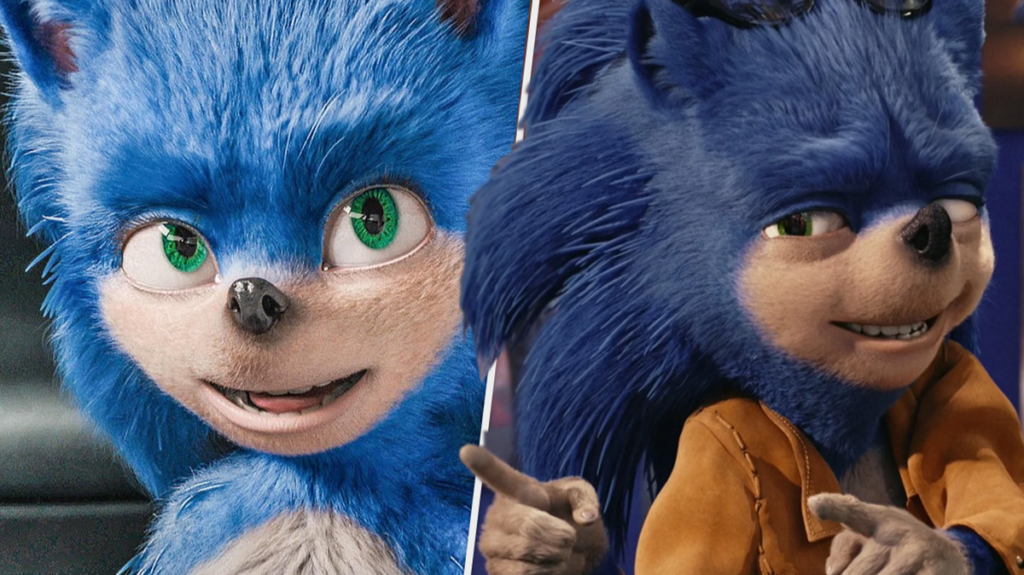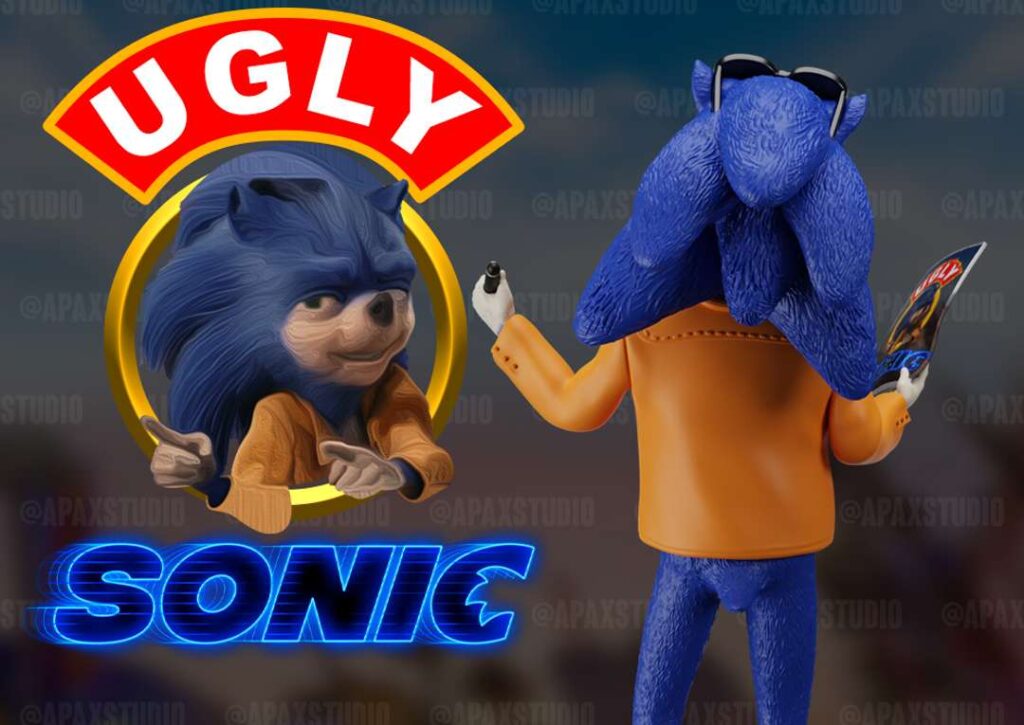Regarding character design in modern media, few stories are as remarkable as Ugly Sonic’s. From an initial backlash that nearly derailed a blockbuster movie to an unexpected revival as a beloved Internet icon, Ugly Sonic’s journey has been nothing short of extraordinary. This article explores the rise, fall, and resurgence of this infamous character design.
The Origins of Ugly Sonic

In 2019, Paramount Pictures unveiled the first trailer for their highly anticipated movie Sonic the Hedgehog. Fans of the iconic Sega video game series were eager to see how the beloved Blue Hedgehog would be translated into a live-action/CGI hybrid. However, their excitement quickly turned to dismay upon seeing Sonic’s design.
Dubbed “Ugly Sonic” by fans and critics alike, the design featured unsettlingly human-like proportions, including small eyes, human teeth, and a lanky build that bore little resemblance to the classic video game character. The Internet erupted with memes, harsh critiques, and demands for change. The severe backlash prompted Paramount to delay the movie’s release and completely redesign the character.
The Backlash: Why Ugly Sonic Was So Controversial
Aesthetic Disconnect
One of the most significant issues with Ugly Sonic’s design was its departure from the original character’s aesthetic. Sonic the Hedgehog, as fans knew him, was a stylized cartoon character with oversized eyes, exaggerated features, and a sleek, anthropomorphic design. By contrast, Ugly Sonic’s appearance leaned toward a more “realistic” interpretation, which many found unsettling.
Fan Expectations
Sonic is a cultural icon with a dedicated fanbase spanning decades. The design’s deviation from the beloved source material felt like a betrayal to many fans who had grown up with the character. This misstep highlighted the importance of respecting fan expectations, especially when adapting beloved properties for the big screen.
Memes and Internet Culture
The Internet played a significant role in amplifying the backlash. Memes featuring it flooded social media platforms, turning the character into a punchline. From humorous edits to sarcastic commentary, Ugly Sonic quickly became a viral phenomenon for all the wrong reasons.
The Redemption: How Ugly Sonic Was Fixed
Paramount Pictures took the criticism seriously, enlisting animator Tyson Hesse, known for his work on Sonic-related projects, to spearhead the redesign. The updated Sonic design debuted in a new trailer later in 2019, and the response was overwhelmingly positive. Fans praised the faithful adaptation of Sonic’s iconic look, and the controversy threatening the movie’s success began to fade.
The redesign came at a cost, reportedly adding $5 million to the film’s budget and delaying its release by three months. However, the effort paid off. Sonic the Hedgehog premiered in February 2020 to substantial box office numbers and positive reviews, proving that listening to fan feedback can make a significant difference.
Ugly Sonic’s Legacy in Pop Culture
From Pariah to Icon
While the original design was abandoned, it didn’t fade into obscurity. Instead, the character took on a life as a cultural icon. Ugly Sonic’s “so bad it’s good” appeal has kept him relevant, with fans continuing to reference and celebrate the character in memes, fan art, and discussions about movie design mishaps.
A Surprising Comeback
In 2022, Ugly Sonic appeared surprisedly in the Disney+ film Chip’ n Dale: Rescue Rangers. Portrayed as a self-aware and slightly washed-up version of himself, it cameo was met with delight from fans. The character’s ability to poke fun at his infamy added a layer of humor and charm, further cementing his place in pop culture.
A Symbol of Accountability
Ugly Sonic’s story is often cited as a prime example of how studios can respond to fan feedback. The character’s redesign demonstrated that listening to audiences and making changes based on their input can lead to commercial and critical success.
Lessons Learned from Ugly Sonic
The Importance of Staying True to Source Material
One of the key takeaways from it saga is the importance of staying true to a beloved character’s essence. While creative liberties can add fresh perspectives, they should not come at the expense of what makes the character iconic in the first place.
The Power of Fan Communities

Ugly Sonic’s transformation highlights the influence of fan communities in shaping media. Social media platforms gave fans a collective voice that studios could not ignore, showing the power of audience feedback in the Internet age.
Embracing Mistakes
The character’s unexpected resurgence as a pop culture figure also underscores the value of embracing past mistakes. By leaning into the humor and absurdity of it, creators have turned what could have been a disaster into a quirky success story.
Conclusion: Ugly Sonic’s Enduring Appeal
The tale of Ugly Sonic is a fascinating case study in modern media, showcasing the interplay between creators, fans, and Internet culture. What began as a design disaster ultimately became a testament to listening to fans and respecting their connection to beloved characters. it,s journey from Internet pariah to cult icon serves as a reminder that even the ugliest missteps can lead to unexpected triumphs. Whether as a cautionary tale or a beloved meme, Ugly Sonic’s legacy is here to stay.
